SES mulls direct-to-handheld 5G satellite business
Thursday, 12 May 2022 20:26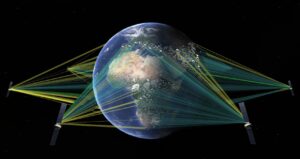
SES is considering plans to provide 5G services directly to handheld devices after rescuing spectrum rights for 62 proposed satellites that were about to expire.
The post SES mulls direct-to-handheld 5G satellite business appeared first on SpaceNews.
Manchin introduces bipartisan bill to establish Space National Guard
Thursday, 12 May 2022 19:09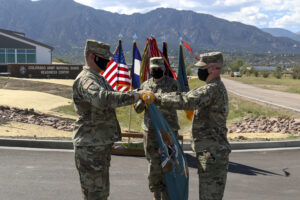
Senator Joe Manchin (D-WV) on May 12 introduced legislation to create a National Guard for the U.S. Space Force.
The post Manchin introduces bipartisan bill to establish Space National Guard appeared first on SpaceNews.
Op-ed | U.S. Antisatellite Test Ban Reveals a New Approach for Security and Sustainability in Space
Thursday, 12 May 2022 16:15
Vice President Harris’s ASAT test ban, specifically designed to address the concerns of hawks and doves alike, suggests a new approach to space security and sustainability.
The post Op-ed | U.S.
Yup, Earth is still there: GOES-18 goes online, sends 1st image of planet
Thursday, 12 May 2022 15:39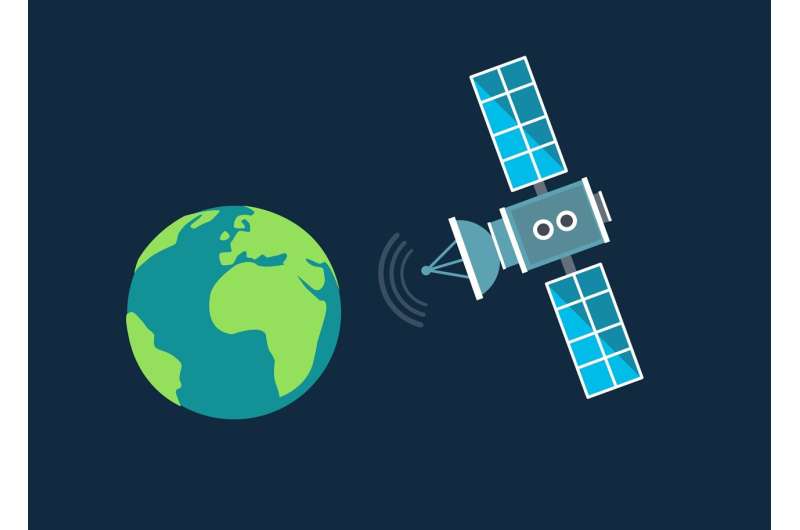
"Hello, world!"
A NASA tweet greeted the internet Wednesday with a beautiful image of the bluish gem-like Earth—the first image captured by the newest weather satellite orbiting the planet.
GOES-18, short for Geostationary Operational Environmental Satellite, blasted off in March from Cape Canaveral Space Force Station on a United Launch Alliance Atlas V rocket thanks to a collaboration between the National Oceanic and Atmospheric Administration and NASA along with several other partners.
GOES-18 is a weather monitoring satellite that should help meteorologists determine potential areas of disaster before they occur in the western part of the United States as well as Alaska and Hawaii, according to the NOAA. It will primarily be used to monitor and predict disaster events like hurricanes, thunderstorms, floods, dense fog and fire.
Among its utility belt of tools, GOES-18 has an Advanced Baseline Imager (ABI), which can view the Earth in 16 different kinds of spectral bands including two visible channels, four near-infrared channels and 10 infrared channels. The previous generation of GOES could only view five different bands. The ABI will help scientists predict where fires on the west coast could start before they ever form, said Pam Sullivan director of the GOES-R program.
Telling sunset
Thursday, 12 May 2022 14:17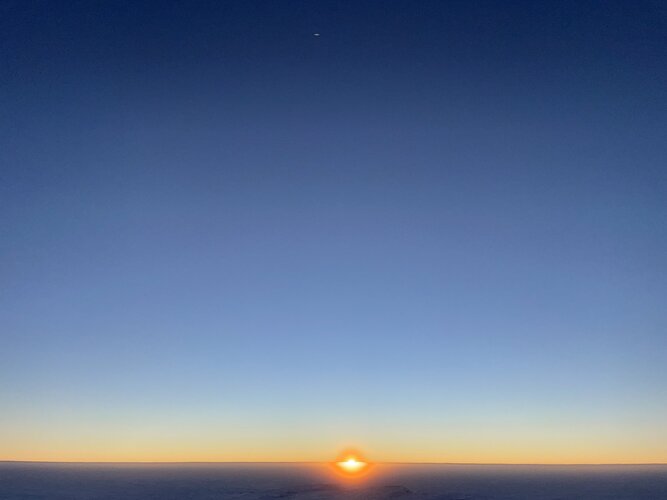 Image:
Image:
The penultimate sunset at Concordia research station in Antarctica marks the beginning of a very exciting time for the 12-member crew: the coming of Antarctic night and the winter-over.
ESA sponsored medical doctor Hannes Hagson and his crew mates are finally embarking on their ‘real’ mission in Antarctica: living and work in isolation for six months in the name of spaceflight research.
The Italian-French outpost Concordia is located 3233 m above sea level where temperatures can drop to –80°C in the complete frozen darkness outside. The sun disappears behind the horizon for four months. No supplies or people can be flown
Astronomers reveal first image of black hole at Milky Way's centre
Thursday, 12 May 2022 12:54 An international team of astronomers on Thursday unveiled the first image of a supermassive black hole at the centre of our own Milky Way galaxy - a cosmic body known as Sagittarius A*.
The image - produced by a global team of scientists known as the Event Horizon Telescope (EHT) Collaboration - is the first, direct visual confirmation of the presence of this invisible object, and comes th
An international team of astronomers on Thursday unveiled the first image of a supermassive black hole at the centre of our own Milky Way galaxy - a cosmic body known as Sagittarius A*.
The image - produced by a global team of scientists known as the Event Horizon Telescope (EHT) Collaboration - is the first, direct visual confirmation of the presence of this invisible object, and comes th USSF Space Test Enterprise Vision integrates test across capability lifecycles
Thursday, 12 May 2022 12:54 The Space Force has released its Space Test Enterprise Vision to communicate the service's intent and provide the amplifying guidance needed to execute the Space Force's test and evaluation mission.
"The test vision and the associated test culture it portends are critical elements of the Guardian Ideal and our core values," said Gen. David D. Thompson, Vice Chief of Space Operations. "Whil
The Space Force has released its Space Test Enterprise Vision to communicate the service's intent and provide the amplifying guidance needed to execute the Space Force's test and evaluation mission.
"The test vision and the associated test culture it portends are critical elements of the Guardian Ideal and our core values," said Gen. David D. Thompson, Vice Chief of Space Operations. "Whil Relations on ISS not changed following Russia's Invasion of Ukraine
Thursday, 12 May 2022 12:54 Relations on the International Space Station (ISS) have not changed amid Russia's ongoing [war] in Ukraine, NASA astronaut Tom Marshburn said on Wednesday.
"As far as the international relations go, that has not changed at all. We've had 40-plus year relationship with our international partners and with the Russian colleagues as well," Marshburn said. "[O]ne of the greatest legacies of the
Relations on the International Space Station (ISS) have not changed amid Russia's ongoing [war] in Ukraine, NASA astronaut Tom Marshburn said on Wednesday.
"As far as the international relations go, that has not changed at all. We've had 40-plus year relationship with our international partners and with the Russian colleagues as well," Marshburn said. "[O]ne of the greatest legacies of the Powering the moon: Sandia researchers design microgrid for future lunar base
Thursday, 12 May 2022 12:54 Sandia National Laboratories is well-known for designing reliable and resilient microgrids for military bases and vital city services. Now, Sandia researchers are working with NASA to design one for the moon.
This is not the first time Sandia has partnered with NASA to power equipment on the moon. In fact, Sandia provided the technical direction for the radioisotope thermoelectric generato
Sandia National Laboratories is well-known for designing reliable and resilient microgrids for military bases and vital city services. Now, Sandia researchers are working with NASA to design one for the moon.
This is not the first time Sandia has partnered with NASA to power equipment on the moon. In fact, Sandia provided the technical direction for the radioisotope thermoelectric generato Ariel Ekblaw on building beautiful architecture in space
Thursday, 12 May 2022 12:54 Living in space today is a cramped and utilitarian endeavor. Astronuats who arrive on the International Space Station (ISS) are prepared for a stay in tight quarters, surrounded by exposed wiring, bulky electronics, and floor-to-ceiling beige paneling.
But what if in-orbit accomodations could be more spacious, livable, and even beautiful? That's a question driving TESSERAE, an ambitious sp
Living in space today is a cramped and utilitarian endeavor. Astronuats who arrive on the International Space Station (ISS) are prepared for a stay in tight quarters, surrounded by exposed wiring, bulky electronics, and floor-to-ceiling beige paneling.
But what if in-orbit accomodations could be more spacious, livable, and even beautiful? That's a question driving TESSERAE, an ambitious sp Multi Part Driving and More - Sols 3469-3470
Thursday, 12 May 2022 12:54 Curiosity is getting a good start to the week! The weekend plan completed successfully, leaving some great rover tracks behind us as seen in the attached picture. Today my role was "RP2", which supports the Rover Planners for the day in planning the arm and drive activities, and doing our final modeling and verification steps before sending the commands to the rover.
Sol 3469 will start ou
Curiosity is getting a good start to the week! The weekend plan completed successfully, leaving some great rover tracks behind us as seen in the attached picture. Today my role was "RP2", which supports the Rover Planners for the day in planning the arm and drive activities, and doing our final modeling and verification steps before sending the commands to the rover.
Sol 3469 will start ou Chinese rover detects water existed on Mars more recently than thought
Thursday, 12 May 2022 12:54 Nearly one year after landing on Mars, scientists say China's Zhurong rover collected data indicating water may have existed on the planet over a longer period of time than previously thought.
A study published Wednesday in the journal Science Advances said Zhurong detected evidence that the Utopia Planitia basin had "substantial" liquid water during its most recent epoch of geologic hi
Nearly one year after landing on Mars, scientists say China's Zhurong rover collected data indicating water may have existed on the planet over a longer period of time than previously thought.
A study published Wednesday in the journal Science Advances said Zhurong detected evidence that the Utopia Planitia basin had "substantial" liquid water during its most recent epoch of geologic hi Traveling to the centre of planet Uranus
Thursday, 12 May 2022 12:54 Caption: Materials synthesis research and study in terapascal range for the first time
Jules Verne could not even dream of this: A research team from the University of Bayreuth, together with international partners, has pushed the boundaries of high-pressure and high-temperature research into cosmic dimensions.
For the first time, they have succeeded in generating and simultaneously analy
Caption: Materials synthesis research and study in terapascal range for the first time
Jules Verne could not even dream of this: A research team from the University of Bayreuth, together with international partners, has pushed the boundaries of high-pressure and high-temperature research into cosmic dimensions.
For the first time, they have succeeded in generating and simultaneously analy Astronomers find 'gold standard' star in Milky Way
Thursday, 12 May 2022 12:54 In our sun's neighborhood of the Milky Way Galaxy is a relatively bright star, and in it, astronomers have been able to identify the widest range of elements in a star beyond our solar system yet.
The study, led by University of Michigan astronomer Ian Roederer, has identified 65 elements in the star, HD 222925. Forty-two of the elements identified are heavy elements that are listed along
In our sun's neighborhood of the Milky Way Galaxy is a relatively bright star, and in it, astronomers have been able to identify the widest range of elements in a star beyond our solar system yet.
The study, led by University of Michigan astronomer Ian Roederer, has identified 65 elements in the star, HD 222925. Forty-two of the elements identified are heavy elements that are listed along Eight things you never knew about mining on Mars, the Moon, and even asteroids
Thursday, 12 May 2022 12:09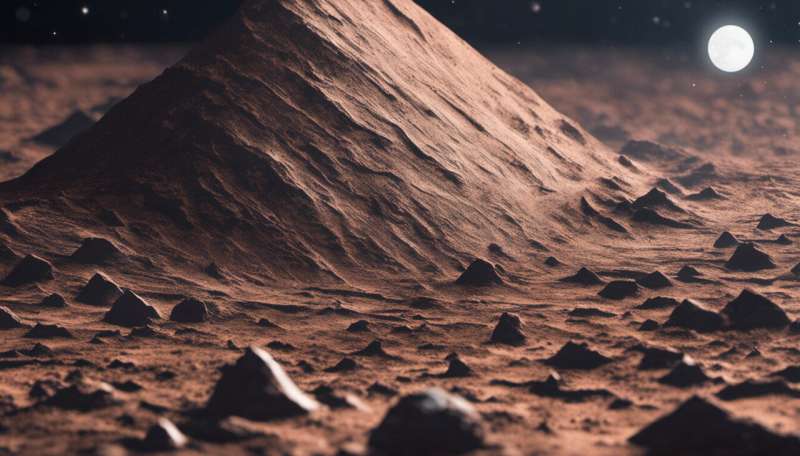
Off-earth mining may once have been purely the stuff of science fiction, but now it's potentially a US$1 trillion industry that is likely to be vital if humans are serious about colonizing Mars or the moon.
Sustaining life on other planetary bodies will almost certainly require the use of in-situ resources which currently remain untapped.
UNSW experts—Professor Andrew Dempster and Professor Serkan Saydam, the director and deputy director of the Australian Center for Space Engineering Research (ACSER)—say the challenges posed by mining such materials in space are enormous.
Robotics may be the answer, but even terrestrial mining systems are not yet fully autonomous, so new technologies will need to be developed.

